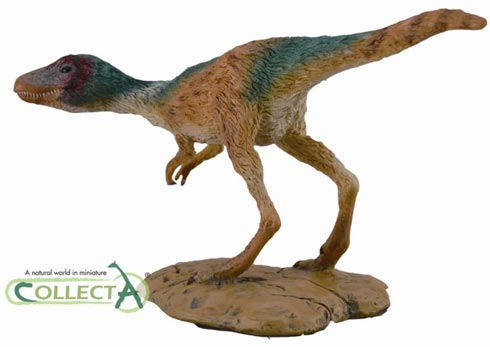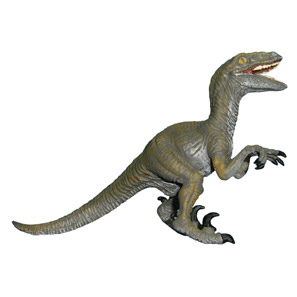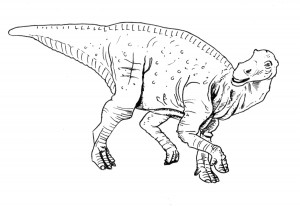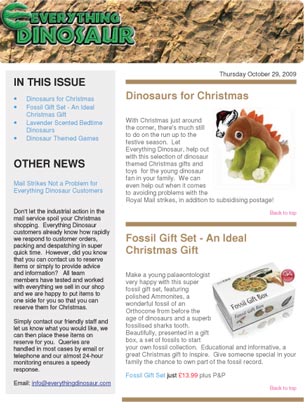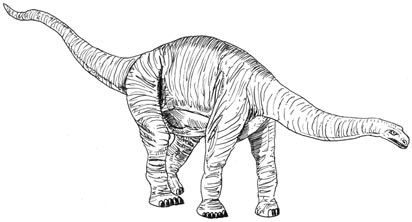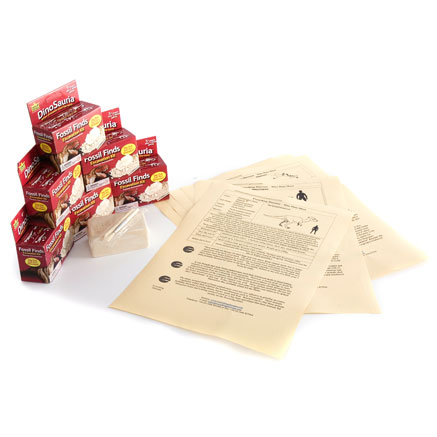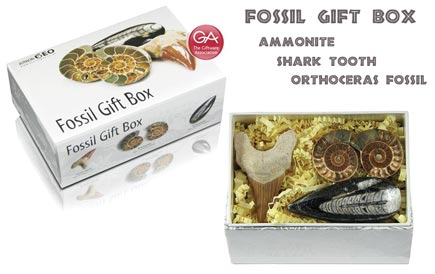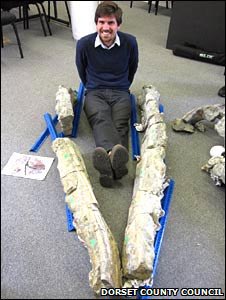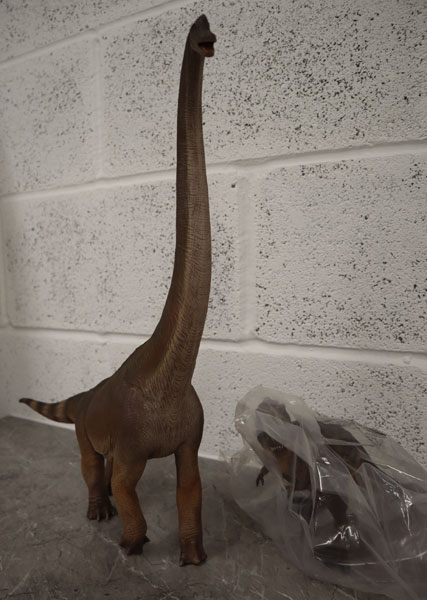Terrible Tyrannosaurs Grew up Fighting
Evidence of Severe Facial Wound in Juvenile T. rex
Facial wounds discovered in the fossil specimen of a juvenile T. rex.
Palaeontologists are aware of the tough lives of tyrannosaurs as they have been able to describe and infer a number of injuries as preserved in fossilised bone. This pathology provides an insight into the lives and behaviours of these apex predators. Being a T. rex was certainly tough, not only did they have to contend with formidable prey animals such as the ceratopsians and hadrosaurs, but there is plenty of evidence to suggest that these predators battled it out amongst themselves.
This type of conflict when an animal from one species fights or competes with another animal of the same species is referred to as intraspecific competition. When one considers the terrible wounds inflicted on each other by tyrannosaurs, this phrase seems somewhat inappropriate. These fights were brutal and even juveniles got in on the act. A new study of an immature T. rex skeleton indicates that at some time in its young life, this young Tyrannosaurus suffered a severe bite to the front of its face.
Terrible Tyrannosaurs
In a new study of the fossils of an immature Tyrannosaurus rex, part of the Burpee Museum of Natural History collection in Rockford, Illinois (United States) evidence of a brutal fight between tyrannosaurs has been found. It seems this youngster, got into a fight and suffered a terrible bite on its face, however, since the fossil bones shows signs of healing, it looks as if this particular dinosaur lived to fight another day.
The Mounted Skull of a Tyrannosaurus rex on Display
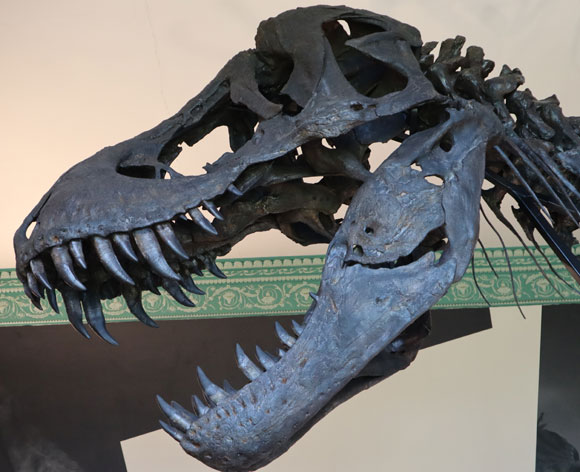
The skull of the T. rex exhibit on display at Wollaton Hall until August 2022. Palaeontologists have identified facial wounds in tyrannosaurs. Picture credit: Everything Dinosaur.
Picture credit: Everything Dinosaur
The Tyrannosaurus fossil in question, nicknamed Jane (although scientists are not sure whether this animal was a female), was about 11-12 years old when it died. The injury occurred sometime earlier in the animal’s life. This bite was more than a friendly nip, the the maxilla bone (the bone at the front of the snout) and the naris (the bone that leads off the premaxilla towards the back of the skull) have been severely damaged. Indeed, a total of four distinct puncture wounds have been identified.
Juvenile T. rex
Examination of Jane’s bones, unearthed in 2001 in Montana, (United States) showed that the wounds were almost certainly inflicted by another T. rex of about the same age. One explanation for the bite marks on the snout that has been suggested is that may be this T. rex was grabbed by a large crocodile at a waterhole as it came down for a drink. Crocodiles attack large animals such as antelope and zebra in Africa, the heads of these animals are often grabbed by the crocodile as it attacks, perhaps this young T. rex was ambushed by a crocodile as it bent its head down low to gulp some water.
However, researcher Joe Peterson of North Illinois University refuted this hypothesis, stating:
“Only a few animals could have inflicted the wound. A crocodile or an adult T. rex would have left different types of bite marks.”
For Joe Peterson and his colleagues, they believe that the oblong shaped bite marks preserved in the fossil bone indicate that the culprit was another young Tyrannosaurus.
He went on to comment:
‘When we looked at the jaw and teeth of Jane, we realised her bite would have produced a very close match to the injuries on her own face. That leads us to believe she was attacked by a member of the same species that was about the same age.”
“The study of the bite marks on Jane’s face demonstrates that even at a young age this dinosaur was engaging in some pretty serious combat.”
Injuries in Juvenile Tyrannosaurs
Evidence of injuries in tyrannosaur fossils is not unheard of. For example, the fossilised skeleton called “Stan”, a gracile T. rex (museum specimen number STAN-BHI3033) discovered in 1992, shows signs of having had part of the back of the head bitten off. It seems that even this 40 foot long individual got into a fight with an even bigger T. rex.
“Stan” the Gracile T. rex also shows Evidence of Injury
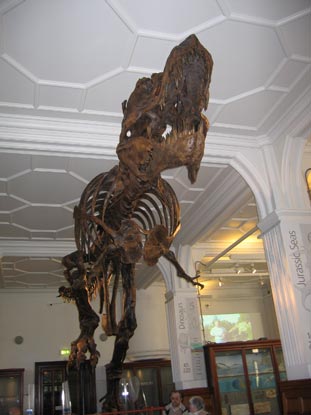
Picture credit: Everything Dinosaur
The University based team believe that in the case of “Jane”, the violence may have been sparked – as it often is today among teenagers – by a territorial ‘turf’ dispute or a simple show of macho dominance. The paper detailing the team’s study is published this month in the scientific journal Palaios.
Co-author Professor Reed Scherer, also from Northern Illinois University added:
What’s unique about this work is we learn something very, very specific about juvenile dinosaur behaviour. This was an animal about the same size that attacked Jane. Whether it was a sibling or from a rival group, we don’t know, but it’s fun to speculate.”
The use of sophisticated computed tomograph (CT) scans to study the bone puncture marks in detail, taken at Rockford Memorial Hospital, confirmed that the puncture marks in Jane’s jaw were consistent with injuries that had healed when the creature was alive.
A Replica of a Juvenile T. rex
Picture credit: Everything Dinosaur
Everything Dinosaur stocks a range of tyrannosaur figures including replicas of juvenile tyrannosaurs.
Visit: CollectA Prehistoric Life Figures.
Other apparent bite marks and lesions found on the skulls of adult tyrannosaurs are now believed to have been left by parasites. A paper published recently by a joint Australian and U.S. based group of scientists postulated that the lesions thought to be bite marks were actually caused by a parasite – Trichomonosis. Jane’s scars are different and definitely caused by inflicted injury, said the Illinois researchers.
To read the article on parasites affecting tyrannosaurs: Parasitic Infection Linked to Tyrannosauridae.


